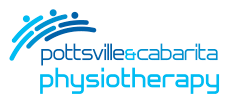Symptoms such as severe, throbbing pain, sensitivity to light and sound, and even nausea can be debilitating. While medication is a common treatment, physiotherapy offers effective strategies to manage and reduce the frequency of migraine episodes.
Physiotherapy’s Role in Migraine Management
Physiotherapy can be particularly effective for patients whose migraine is triggered or exacerbated by musculoskeletal issues, such as tension and misalignment in the neck, jaw and shoulders. Here’s how physiotherapy can help:
- Manual Therapy: Techniques like soft tissue massage, mobilisation, and manipulation of the neck can relieve the muscle tension that may contribute to migraine onset.
- Posture Training: Improving posture can reduce the strain on the neck and shoulders, thereby minimising one potential trigger for migraine.
- Exercise Therapy: Specific exercises can strengthen the muscles supporting the neck and upper back, improving posture and decreasing the likelihood of migraine caused by muscular tension.
- Relaxation Techniques: Techniques such as deep breathing or guided imagery can help manage the stress that might trigger migraine.
Lifestyle Adjustments for Migraine Relief
- Regular Physical Activity: Engaging in regular, moderate exercise like walking or swimming can reduce stress and help regulate the body’s mechanisms that might be linked to migraine.
- Adequate Hydration and Nutrition: Sometimes, dehydration and certain dietary deficiencies can trigger migraine. Staying hydrated and maintaining a balanced diet can help.
- Consistent Sleep Schedule: Lack of sleep is a well-known migraine trigger. Maintaining a regular sleep schedule can help manage your symptoms.

